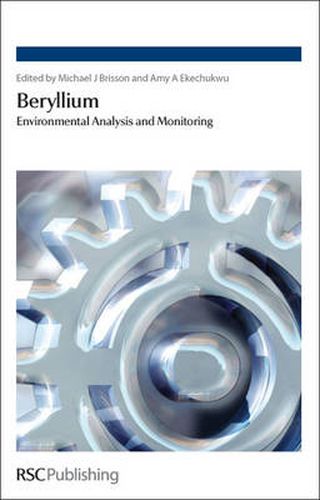Readings Newsletter
Become a Readings Member to make your shopping experience even easier.
Sign in or sign up for free!
You’re not far away from qualifying for FREE standard shipping within Australia
You’ve qualified for FREE standard shipping within Australia
The cart is loading…






As the use of beryllium grows worldwide, the need for a single source of information on this important but toxic element is of increasing importance. This comprehensive book describes all aspects of the current sampling and analysis techniques for trace-level beryllium in the workplace. It offers both a historical perspective and a description of the state-of-the-art in a single place. It covers the challenges inherent in sampling procedures such as reproducibility, limited sample volume, surface sampling materials and collection efficiency. It also deals with the problems involved in analytical techniques including lower detection limits, identification and compensation for matrix interferences, greater sensitivity requirements and the need for more robust preparation techniques. Future trends, including development of real-time beryllium sampling and analysis equipment, are also explored. Readers will gain an understanding of sampling and analytical techniques best suited for sensitive and accurate analysis of beryllium at ultra-trace levels in environmental and workplace samples. Many standard sampling and analysis techniques have weaknesses that this book will help users avoid. Written by recognized experts in the field, the book provides a single point of reference for professionals in analytical chemistry, industrial hygiene, and environmental science.
$9.00 standard shipping within Australia
FREE standard shipping within Australia for orders over $100.00
Express & International shipping calculated at checkout
As the use of beryllium grows worldwide, the need for a single source of information on this important but toxic element is of increasing importance. This comprehensive book describes all aspects of the current sampling and analysis techniques for trace-level beryllium in the workplace. It offers both a historical perspective and a description of the state-of-the-art in a single place. It covers the challenges inherent in sampling procedures such as reproducibility, limited sample volume, surface sampling materials and collection efficiency. It also deals with the problems involved in analytical techniques including lower detection limits, identification and compensation for matrix interferences, greater sensitivity requirements and the need for more robust preparation techniques. Future trends, including development of real-time beryllium sampling and analysis equipment, are also explored. Readers will gain an understanding of sampling and analytical techniques best suited for sensitive and accurate analysis of beryllium at ultra-trace levels in environmental and workplace samples. Many standard sampling and analysis techniques have weaknesses that this book will help users avoid. Written by recognized experts in the field, the book provides a single point of reference for professionals in analytical chemistry, industrial hygiene, and environmental science.